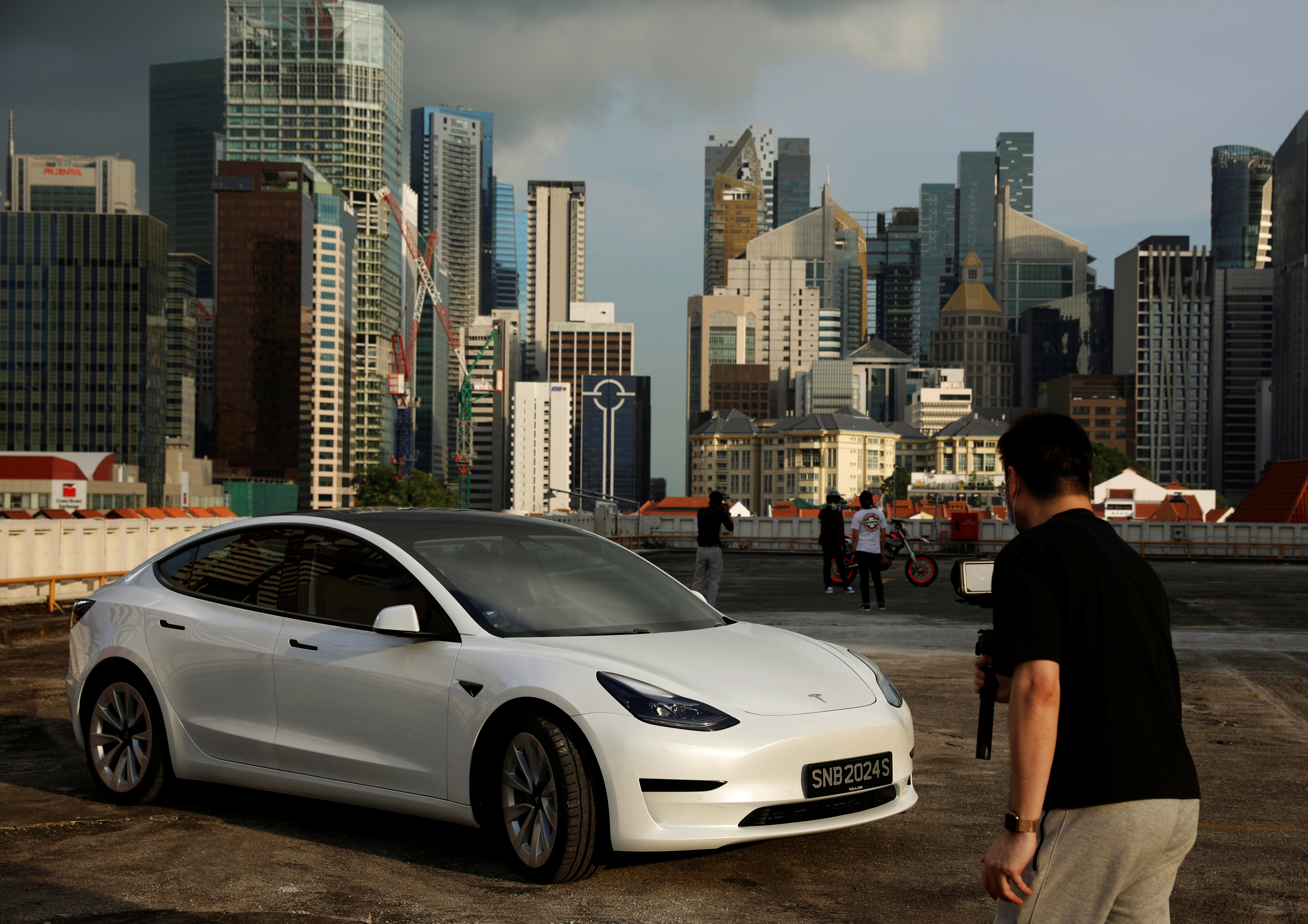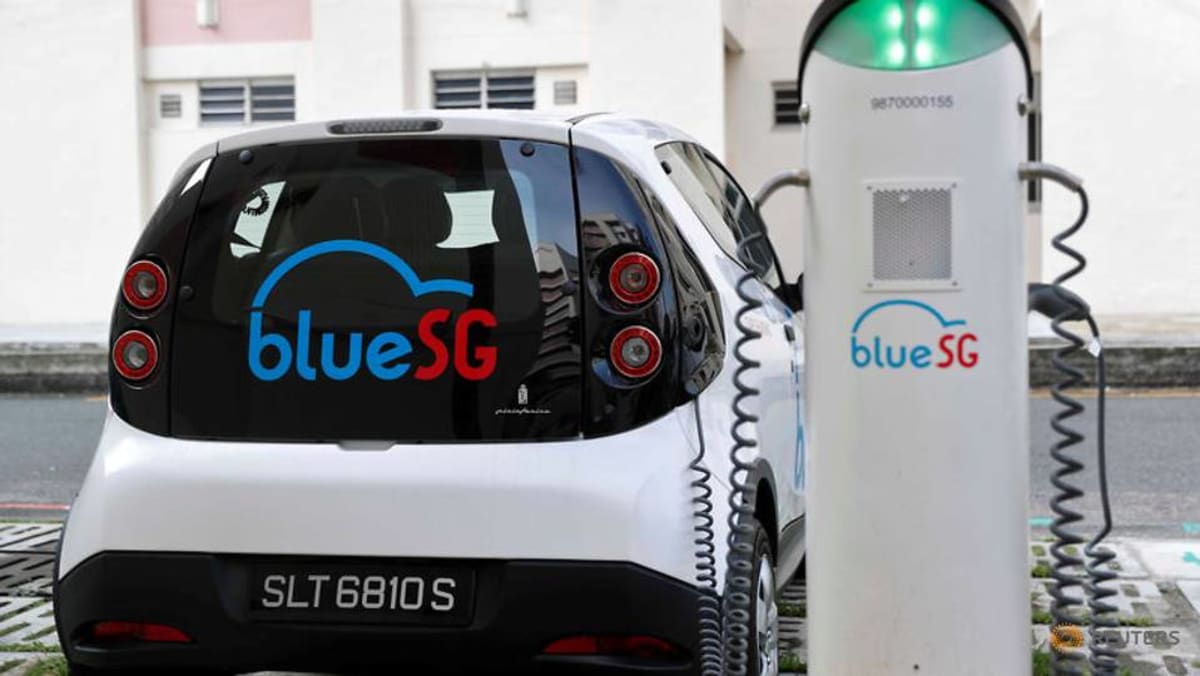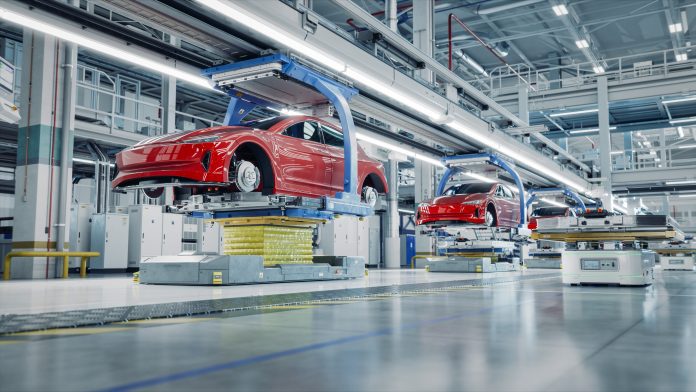EV vs ICE Vehicles in Singapore: Which Saves You More Money in 2025? (Cost Breakdown)
Is an electric vehicle (EV) really cheaper to own and operate than an internal combustion engine (ICE) vehicle in Singapore?
With EVs gaining traction, driven by government incentives and environmental goals, many are weighing the financial implications.
With plans to phase out ICE vehicle sales by 2030, Singapore's push towards cleaner energy is supported by policies like the EV Early Adoption Incentive (EEAI) and Vehicular Emissions Scheme (VES) rebates.
This article aims to provide a cost comparison, focusing on factors relevant to cost-conscious readers, ensuring a practical and engaging guide.
Upfront Costs: Initial Investment and Incentives

Purchase Price and Government Incentives
EVs typically carry a higher purchase price due to advanced battery technology. However, Singapore’s government offers significant rebates to bridge this gap:
- In 2024, the EEAI provided a rebate of up to 45% off the Additional Registration Fee (ARF), capped at S$15,000.
- The VES offered up to S$25,000 for EVs in the cleanest emission band (A1).
- These rebates are deducted from the ARF.
- This potentially reduces the net cost to zero for some models due to a zero-dollar ARF floor extended until December 2025.
The Certificate of Entitlement (COE), a significant cost in Singapore, is the same for both EV and ICE vehicles, depending on the category (e.g., Category A for smaller cars)
As for smaller cars. COE prices in 2024 varied, typically ranging from S$100,000 to S$150,000, adding a substantial shared expense.
EV Example: Tesla Model 3
| Component | Amount (S$) | Notes |
|---|---|---|
| OMV | 48,204 | Base value from Tesla Singapore estimate |
| ARF (before rebates) | 63,587.60 | Corrected; original states 67,587 |
| VES Rebate | 25,000 | A1 band for EVs |
| EEAI Rebate | 15,000 | 45% of ARF, capped |
| Net ARF Paid | 23,587.60 | n/a |
| Excise Duty | 9,641 | 20% of OMV, rounded |
| GST | 4,628 | 8% of (OMV + Excise Duty), rounded |
| Registration Fee | 140 | Fixed LTA fee |
| Total Before COE | 90,200 | Matches original with provided ARF |
ICE Example: BMW 330i
| Component | Amount (S$) | Notes |
|---|---|---|
| OMV | 40,000 | Approximate from Sgcarmart estimate |
| ARF | 48,000 | Full amount, no rebates |
| VES/EEAI Rebates | 0 | Not applicable for standard ICE |
| Excise Duty | 8,000 | 20% of OMV, exact |
| GST | 3,840 | 8% of (OMV + Excise Duty), exact |
| Registration Fee | 140 | Fixed LTA fee |
| Total Before COE | 99,980 | Rounded to 100,000 in original text |
Adding a COE of, let’s say, S$120,000, the total upfront cost for the EV would be S$210,200, and for the ICE, S$220,000.
This shows EVs can have a lower upfront cost after rebates, an unexpected detail given their higher base price.

Additional Registration Fee (ARF)
How is ARF Calculated?
ARF rates are tiered based on OMV:
| Value Range | Calculation |
|---|---|
| Up to S$20,000 | 100% of OMV |
| S$20,001 to S$40,000 | 100% of first S$20,000 plus 140% above S$20,000 |
| S$40,001 to S$60,000 | Includes rates up to 190% for portions above S$40,000 |
| S$60,001 to S$80,000 | Includes rates up to 250% for portions above S$60,000 |
| Above S$80,000 | Includes rates up to 320% for portions above S$80,000 |
For EVs, the rebates significantly reduce the net ARF paid, making them more affordable upfront.
For instance, the Tesla Model 3’s net ARF paid was S$23,587.60 after rebates, compared to S$48,000 for the BMW 330i without rebates.
Other Costs
Other initial expenses include insurance and road tax. EV insurance premiums might be higher due to potential repair costs for batteries.
Meanwhile, road tax for EVs is based on power output, often higher than ICE vehicles.
For example:
An EV like the MG4 might have an annual road tax of around S$1,500, nearly double that of a Toyota Corolla at S$742, as noted in Highway’s cost analysis.
Running Costs: Ongoing Expenses and Savings
Fuel/Electricity Costs
Running costs are where EVs shine, particularly with charging costs. In Singapore, petrol prices in 2024 averaged S$2.50 per liter.
For an ICE Vehicle:
| Item | Details |
|---|---|
| Fuel Efficiency | 10 km per liter |
| Cost per km | S$0.25 |
| Average Annual Mileage (Assumed) | 10,000 km |
| Annual Fuel Cost | S$2,500 |
For EVs, charging costs vary by method:
| Charging Type | Details |
|---|---|
| Home/ Residential Charging |
|
| - Rate | S$0.20 per kWh |
| - Energy Consumption | 0.15 kWh per km (Assumed for Tesla Model 3 charging) |
| - Cost per km | S$0.03 |
| - Annual Cost (10,000 km) | S$300 |
| Public Charging | |
| - Rate | S$0.4746 per kWh |
| - Cost per km | S$0.071 Note: Rates like SP Group’s fast charging at S$0.4746 per kWh raise the cost per km to S$0.071Note: Rates like SP Group’s fast charging at S$0.4746 per kWh raise the cost per km to S$0.071 | | - Annual Cost (10,000 km) | S$710 | |
| - Annual Cost (10,000 km) | S$710 |
This significant difference highlights a key saving for EV owners, especially with home charging, an unexpected detail for those used to gas station visits.
Maintenance Costs
Maintenance costs are lower for EVs due to fewer moving parts, no oil changes, and simpler drivetrains.
Generally estimated:
- Estimated Savings:
- EV maintenance can save 40% to 50% compared to ICE.
- Annual costs:
- EV: around S$1,000
- ICE: around S$1,500
- Battery Replacement:
- Costs around S$10,000 every 8-10 years, which is a long-term expense.
- Total Maintenance Over 10 Years:
- EV maintenance (including battery) might total around S$20,000.
- ICE maintenance might total around S$15,000.
- Fuel savings often offset the higher EV costs.
Other Factors: Convenience and Environmental Impact
Convenience
EVs offer the convenience of home charging, eliminating gas station visits, which is ideal for Singapore’s urban dwellers.
Public charging infrastructure, with over 7,100 points installed by mid-2024 and a target of 60,000 by 2030 (MOT Singapore), is improving, but access varies.
ICE vehicles require regular refueling, which might be less convenient for busy professionals.
Environmental Impact
EVs produce zero tailpipe emissions, contributing to better air quality, which indirectly benefits health costs.
While not a direct financial saving, it aligns with Singapore’s Green Plan 2030, potentially influencing long-term urban living costs.
Conclusion: Which Saves More Money?
Summing up, the evidence leans toward EVs saving more money over time. For our examples, over 10 years:
- EV (home charging):
- Upfront S$210,200 + Running (S$300 fuel + S$1,000 maintenance) per annum x 10 years + S$10,000 battery
= S$210,200 + S$13,000 + S$10,000 = S$233,200
- Upfront S$210,200 + Running (S$300 fuel + S$1,000 maintenance) per annum x 10 years + S$10,000 battery
- ICE:
- Upfront S$220,000 + Running (S$2,500 fuel + S$1,500 maintenance) per annum x 10 years
= S$220,000 + S$40,000 = S$260,000
- Upfront S$220,000 + Running (S$2,500 fuel + S$1,500 maintenance) per annum x 10 years
This shows a potential saving of S$26,800 for EVs, factoring in home charging. However, if reliant on public charging, the saving reduces to around S$20,800, considering higher electricity costs.
Individual factors like driving habits, charging access, and COE prices can vary, so consulting dealers and financial advisors is recommended.
At a Glance Tips:
| Cost Component | EV (Tesla Model 3, Home Charging) | ICE (BMW 330i) |
|---|---|---|
| Upfront Cost (before COE) | S$90,200 | S$100,000 |
| Annual Fuel/Charging | S$300 | S$2,500 |
| Annual Maintenance | S$1,000 | S$1,500 |
| 10-Year Battery Cost | S$10,000 | - |
| Total 10-Year Cost (with COE S$120,000) | S$233,200 | S$260,000 |
- Real-World Examples: Check models like BYD Atto 3 for affordable EVs or Honda HR-V for ICE options, comparing on Sgcarmart.
- Government Resources: Visit LTA for ARF details and ChargeWhere.SG for EV incentives.
- Professional Advice: Consult car dealers for personalised quotes and financial advisors for loan options, ensuring alignment with your budget and lifestyle.
Let us know what you think about this topic, and what do you want to hear next.
You can now be our community contributor and make a pitch to have your favourite personality be on our show.
Join our community group and drop us your insights on this topic.

-3.png?width=50&name=Square%20(2)-3.png)










Let us know what you think of this post